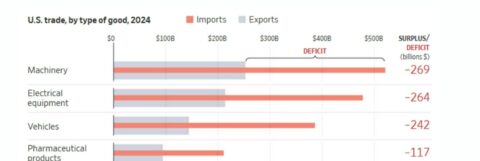- American manufacturing has significantly declined and is now dominated by the service sector, a trend exacerbated by global trade agreements and the COVID-19 pandemic. This new reality highlights the urgent need to revitalize domestic production and establish fair trade practices.
- The U.S. faces substantial trade deficits, particularly in electrical equipment and vehicles, but industry leaders believe advanced manufacturing, fueled by AI and robotics, can significantly enhance global competitiveness.
- Navigating the evolving tariff landscape requires strategic compliance, financial management, and a commitment to continuous improvement, as highlighted by Clevenger’s observation on the effectiveness of cross-functional teams in addressing various aspects of product design and manufacturing.
On May 13, MichAuto Executive Director Glenn Stevens Jr. led a discussion with UHY LLP Partner and Managing Director of UHY Advisors Thomas Alongi and UHY Consulting Principal Charles Clevenger on the current landscape of American manufacturing as it relates to tariffs.
Alongi and Clevenger provided insights on managing the new tariff environment, including investing in technology to enhance productivity, focusing on cost-control measures, and the necessity of building robust relationships with suppliers to mitigate disruption.



